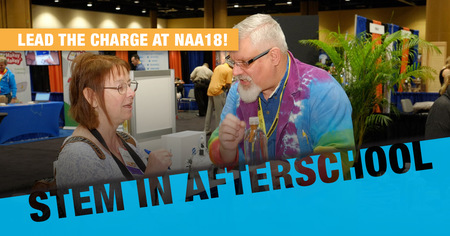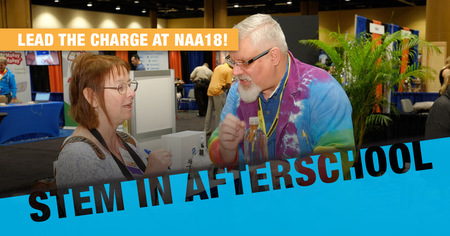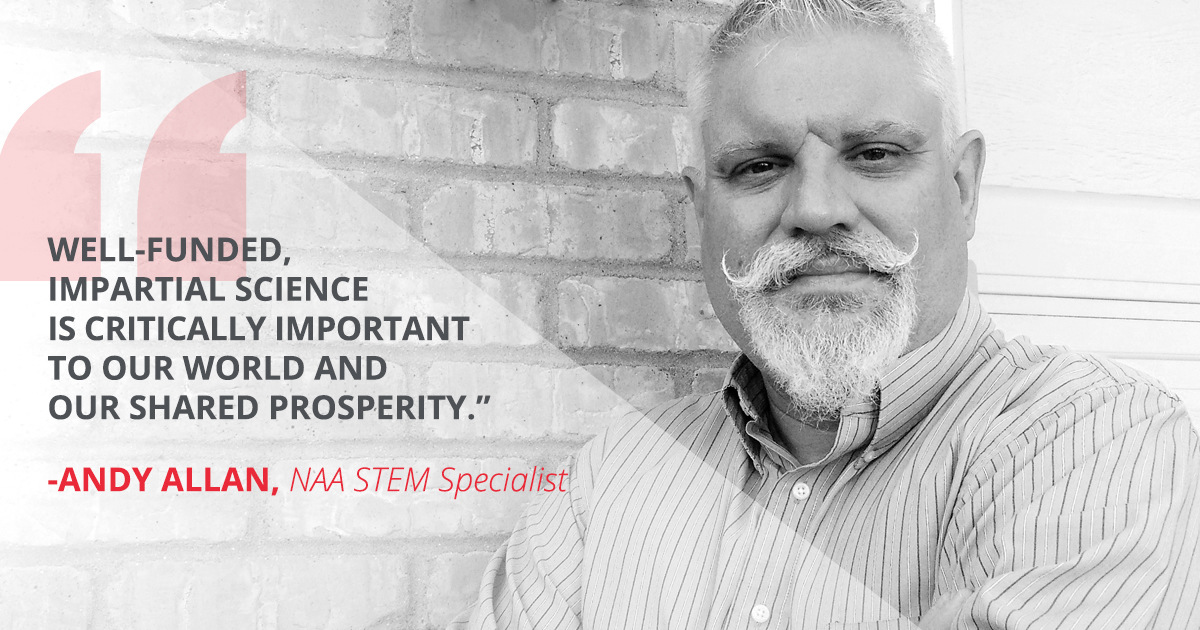News
Check out the latest news about NAA and special announcements pertinent to the field of afterschool.
Displaying items by tag: STEM
Question Everything!
i. Why is it important to teach STEM with hands-on activities?
ii. Why do you think that?
iii. What personal examples do you have of successfully teaching a hands-on activity?
Measuring Up for STEM: Imperial or Metric?
From recipes and crafts to deciding if a new sofa can fit in the living room, the ability to measure and estimate sizes and amounts is an extremely important STEM and life skill young people need to master.
STEM in Afterschool: Lead the Charge at NAA18!
Did you know that the National AfterSchool Association is a great resource for STEM professional development?
STEM in Afterschool: Lead the Charge at NAA18!
Did you know that the National AfterSchool Association is a great resource for STEM professional development?
STEM vs. STEAM: Why the “A” is Essential
In recent years, there has been momentum to include the arts in STEM (science, technology, engineering and mathematics) learning.
Advice to Boost the Success of Inquiry
Over the past 10 years there has been a focused and well-researched shift for STEM education to be based on hands-on, inquiry-type activities. The afterschool environment is perfect for implementing these types of activities.
Finding the Balance Between 'Knew' and 'New'
A few weeks ago, I wrote about my visit to our NAA storage facility to go through years and years of organizational files. With NAA's 30th anniversary coming up in 2018, I find myself spending more and more time thinking about how to honor the past of our work, while also looking toward the future.
Finding STEM Learning Opportunities that Inspire Young People to Explore, Discover and Create
The process of teaching and learning science, technology, engineering and mathematics (STEM) offers youth opportunities to make sense of the world they live in and prepare them for the future workforce.
In Defense of Science
Working in the private and public sectors, I have been involved in science education for over 20 years. From parents and principals, to CEOs and administrators, I am passionate and accustomed to fighting for STEM. Today, I need to speak about something more fundamental.
2 X 2 in Afterschool: Yikes, Math!
Yikes, math! Unfortunately, the sentiment is often shared by young people and adults alike. Math has a bad rap in the United States, and this attitude reflects in the country's test scores.
National AfterSchool Association • 2961A Hunter Mill Road, #626 • Oakton, VA 22124 • info@naaweb.org










